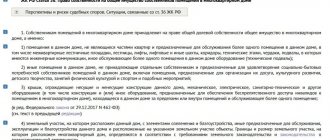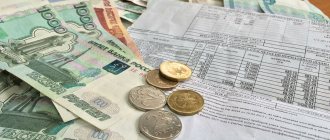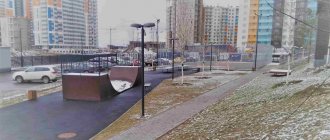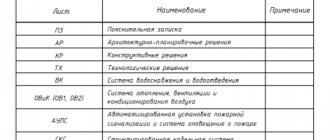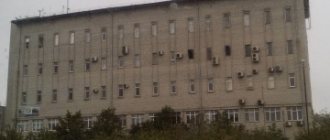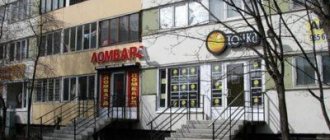What is SOI (SOID) on the receipt
Since January 1, 2021, the owners have received receipts that do not include a column for payment for general household needs. The fee for ODN has been cancelled. However, a new column has appeared with the abbreviation SOI or SOID. Let's figure out what this means.
Utility resources (CR) associated with meeting the needs of an apartment building are SOI or SOID. Decoding SOID in housing and communal services is “maintenance of the common property of the house.” COID ensures payment of costs for common property (COP), which does not relate to residents’ apartments. That is, in essence, these are the same general house needs (GDN). Services for maintaining the property of an apartment building include services for maintaining technical floors, basements, attics, strollers, elevators, roofs, etc.
In the payment order, this item may be called SOID, SOI, “Maintenance, repair and management of property” (that is, common property). The following items may be indicated separately:
- cold water for OI content;
- wastewater for OI content;
- electricity for maintaining the equipment.
Until 2021, service organizations suffered losses associated with non-payments or theft of resources in apartment buildings. But from January 1, 2021, expenses related to utilities began to be classified as housing.
SOID in payments does not include the fee for major repairs of apartment buildings. This position is indicated in the payment order as a separate line.
Monthly housing maintenance fee
Standards for SOI housing and communal services are defined differently. This is explained by the fact that the amount of payment for hot and cold water supply is set by local authorities. And the electricity tariff is calculated based on the type of house, design features (presence of an elevator, etc.) and other parameters. This means that the amount of rent on your receipt depends on many factors.
How is it calculated?
The amount of payment for utility resources consumed by the entire house is established after SOI standards are approved in the region. The latter indicator is taken into account when calculating the tariff for the maintenance of common property. Also, the amount of payment citizens make depends on the size of personal property and the type of home. The amount obtained by multiplying the indicated indicators is divided by the total area of the apartment building, taking into account non-residential premises.
Seasonal work
The maintenance of common property means not only the calculation of resource consumption (water, gas, electricity), but also other types of work. The latter, in particular, include:
- repair of walls, facades, roofs, information signs (preventive or emergency);
- processing of joints and connections of structural elements of the building;
- sanitary cleaning of internal premises;
- improvement of the territory;
- removal of garbage, snow, ice from the local area;
- maintenance of communication systems and others.
The list of seasonal work is approved between the owners and the management organization and does not depend on the amount of rent.
Maintenance
Current repairs are carried out by agreement of the owners and the management company.
This list of works includes measures to maintain boiler and other equipment, identify and eliminate leaks, and restore structural elements of the building. The amount of payment for current repairs is determined at a meeting of owners.
Garbage removal
In housing and communal services receipts, garbage removal is included in the list of works paid for as SOI. Management companies do not have the right to charge a separate fee for this service. Therefore, if garbage removal appears as a separate line on the receipt, you must contact the management company or the regulatory organization, since these requirements are a gross violation of the law.
It was ONE, it became SOID
ODN in housing and communal services receipts took into account the payment for the consumption of cold and hot water supply, electricity, heating, sewerage when servicing common property in an apartment building. To be more precise, this is the difference in readings between the data of the common house meter and the amount of the owners’ individual metering devices.
ODN in the receipt was indicated in a highlighted line and was not included in the payment for the maintenance and repair of the structure. Since January 1, 2017, the SOID is indicated in receipts, but is included in the payment for the maintenance of residential premises.
Thus, the Government encourages management companies and homeowners associations to use energy resources with care. They cannot indicate amounts in payment slips that exceed the standard. And the difference should fall on the shoulders of the management company. What encourages the management company to fight the theft of resources and non-payers of utility services.
This is determined by Law No. 176-FZ, adopted by the State Duma in 2015.
The new order allowed owners to pay only for themselves, and not for their neighbors. Since the amounts for the specified positions are accrued according to the standards. Now the deficit for excess losses and non-payments of other owners is not transferred to bona fide owners.
The concept of SOI
Owners of residential premises see the abbreviation SOI in their payment document. The interpretation of this concept is represented by the content of common property in an apartment building. When generating a receipt, resource supply companies or management organizations include the SOI of hot and cold water, electricity, and heating in the document.
Accordingly, these charges assume amounts for the use of services for general household needs. The obligation to pay such charges is determined by Government Decree No. 354 of 2011.
Changes in law and SOI
Currently, the rule is that standards must be applied when calculating SOI. Homeowners are obligated to pay strictly what is determined by these standards. The part not covered by the funds of the apartment owners is subject to payment by the management company.
Depending on who manages the house, the fee may be paid by:
- UK;
- homeowners association.
Changes in this regard were made in Government Decree No. 354 of 2011. In connection with these innovations, management companies began to actively combat the theft of electrical energy, monitor the formation of leaks and monitor that all residents pay the charges in the receipt.
Impact of SOI on Payment
The main part of the standards has not changed. Significant adjustments have been made regarding the SOI in an apartment building for electricity. The new rules stipulate that if there is an attic and basement in the apartment building, citizens are responsible for paying for the maintenance of these premises.
Before the adjustments were made, such area was not subject to payment obligations. The result of the innovations was that expenses for general household needs increased. The technical passport of the MKD is subject to verification. If this act indicates that utility-type networks are located in the attic and basement, then the additional amount of charges is reflected in the receipt.
Property owners have the opportunity to equip common areas with metering devices. Then they can prove that there is no resource consumption in the basement and attic. You will not need to pay for SOI.
Another change was that citizens deprived of the ability to work, regardless of group, lost the right to benefits regarding general house charges. This category of persons now pays ODN at the full rate.
What's included in this article
Often, management companies deliberately do not provide a breakdown of what is included in the SOID. Article No. 154 of the Housing Code explains what resources are used in the maintenance and upkeep of the common property of an apartment building.
The SOID article includes:
- cosmetic repairs of entrances, that is, whitewashing and painting of walls and ceilings;
- repair services related to maintaining high-rise building structures in satisfactory condition;
- maintaining elevator facilities in working order;
- costs of electricity spent on lighting entrances and operating elevators;
- losses of hot and cold water when supplied to consumers;
- maintaining the territory related to an apartment building (MKD)
and so on.
In addition, premises have been identified whose space must be taken into account for LLIN calculations. This service is necessary to maintain sanitary, fire and other standards, and depends on the owner’s area.
That is, owners of one-room apartments will pay less than owners of three-room apartments. The calculation of LLIN is carried out on the basis of Decree of the Government of the Russian Federation No. 354.
Seasonal work
Works that are related to seasonality are highlighted separately.
When calculating, take into account:
- Snow removal from the territory belonging to the apartment building, removal of icicles from the roofs and eaves of the house is carried out in winter and spring.
- In winter, work is carried out indoors and the building is sanitized.
- Collection and removal of leaves in the autumn.
- Caring for the local area, watering and improving lawns is carried out from spring to autumn.
- Watering asphalt in summer.
- Repair of roofs, walls, and sealing of joints is carried out only in the warm season.
Maintenance
It is carried out according to the work schedule approved by the residents of the house. It is compiled by management company employees after inspecting utilities and the condition of the apartment building.
At the general meeting of the MKD it is approved, and the heads of the management company approve it. If extraordinary work arises, it is included in the schedule. The initiator is the engineering service of the management company or the owner of the property.
Garbage removal
Cleaning and garbage removal is the responsibility of the management company. The trash bins that are installed near the entrance must be cleaned daily. However, if there is a need for this, garbage removal is carried out several times a day.
To do this, the management company must have a schedule according to which the territory is cleaned and garbage is removed. In this case, the payment is highlighted as a separate line in the payment slip marked SOID.
The management company does not have the right to charge additional payment for garbage removal if such an article is present in the payment order.
Electricity supply
The standard payment for electricity is calculated based on the total value of the territory of public premises.
The calculations take into account the lighting of the object and the mechanisms that consume electricity:
- passages;
- platforms located on floors and between them;
- power supply for elevators, elevators or other shafts, if available in the house;
- spaces for technical purposes;
- attic areas;
- basement spaces.
Water and wastewater
For calculations, similar data are accepted as in the previous case. Consumption of cold water supply (cold water supply) and hot water supply (hot water supply) is calculated according to the total volume of common space.
For calculations, the volumes of premises are taken:
- platforms located on floors and flights of stairs;
- common passages;
- entrances;
- halls, vestibules, strollers;
- concierge rooms.
The situation is more complicated with SOI for water disposal. In some regions of the Russian Federation, the standard for wastewater disposal has not been approved. Therefore, in such regions it is prohibited to accept remuneration for these needs.
In payment bills you can find payment for wastewater disposal. It is assumed that the hot and cold water used for cleaning floors is drained into the sewer. But due to the complexity of calculations and the lack of standards for wastewater disposal, sometimes management companies do not charge for wastewater disposal at all.
Heating
Payment for heating assumes that it is provided in common areas, that is, halls, entrances, technological floors, etc. are heated.
SOI calculation
The calculation procedure is established separately for hot and cold water supply and electricity. Standards are provided for the above needs.
The following formula is used for calculation:
C = (N*OP*VK)/OSN, where:
- C – amount to pay;
- N – approved consumption standards;
- OP – the size of the common premises (this includes entrances and attics);
- VK – the size of the apartment, the right of ownership to which is vested in the citizen;
- OPN is the total value of non-residential and residential premises.
To clarify information about the area of the house, you need to refer to the technical passport. The amount obtained as a result of the calculation using the above formula must be multiplied by the current tariff for water supply or electricity consumption.
It must be taken into account that the general calculation of technical energy cannot be included in household needs. This indicator is reflected in utilities and is subject to payment according to established tariffs.
If the calculations made by the citizen themselves end up with a different value compared to the receipt, this means that the tenant or an employee of the management company made a mistake. If checking your own calculation does not show any violations, then you need to contact the Criminal Code and ask to provide the calculation.
Amount of payment for SOI
The standard in this case is defined differently. The reason is that the amount of payment for cold and hot water is set by local authorities. Several factors influence the amount of electricity.
These include:
- type of apartment building;
- design features. They manifest themselves in the fact that there is an elevator and other equipment.
The calculation can be carried out after the local authorities determine the tariffs.
How is SOI calculated?
Calculating utility costs for SOI is not as complicated as it seems at first glance. Any owner can do it. To do this, just use the calculation formula:
С=N*Sodm*Sq/S, where
C – KR for SOI (utility expenses for common property);
N – Standard approved by regional authorities for the resources used;
Sodm – Area of common property;
Sq – Area of the owner’s apartment or non-residential premises;
S – Total area of the house minus Sodm.
Example. Let's calculate the SOID of electricity. We take a two-room apartment of 47 m2. Let's assume that the standard is 4.03.
The common house area is 1000 m2, and the total area is 5000 m2. Electricity consumption is calculated using the above formula by substituting values:
C=4.03*1000*47/5000=37.9 rub.
Thus, the amount of payment for electricity will be 37.9 rubles.
Explanation of abbreviations on the receipt
When preparing payment documents, the management company uses various abbreviations. They are not always clear to apartment owners.
Here are the main ones used by service organizations. For convenience, we present them in tabular form.
| abbreviation | Expression |
| Nom. PU | This column indicates the number of the individual metering device installed in the apartment. |
| Pl. O/F | The total living area occupied by the owner is indicated. |
| Register/stay | The column contains data on registered citizens and actual residents. |
| USZN | “The Office of Social Protection of the Population” is an institution where owners can apply to receive protection. |
| General Pl. Houses | A set of residential and non-residential premises of an apartment building. |
| ONE | General house needs. |
| Contents | Maintenance of housing stock. |
| IPU, ITU | Individual metering device, individual metering point. |
| KTU, ODPU | Collective metering point, common house metering device. |
| MOP | Common areas. |
Useful article? Rate and share with friends!
